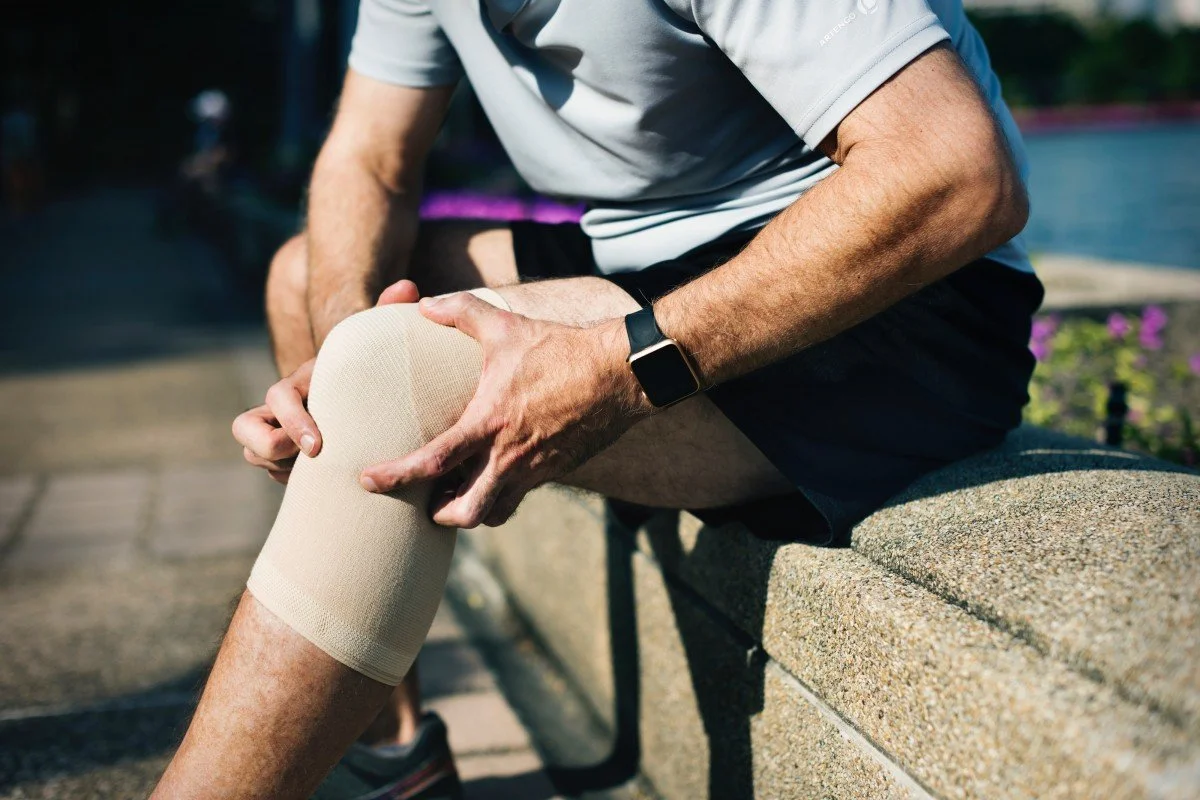Knee Pain
Knee pain is a condition that can occur in any given population or age group. Here, problems arise in the bony structures of the joint, the kneecap itself, or the ligaments and cartilage of the knee. It can be categorised as acute (short-term) or chronic (long-term) injuries. Young, active children and the elderly are more susceptible to knee injuries.
Knee pain can be brought on by a variety of factors including:
Tendonitis
Bursitis
Arthritis
Tears in the menisci/ligaments
Growing pains in children
Infection
Knee pain has a strong relationship with our feet and the rest of our limbs. At Sole Purpose Podiatry, we aim to treat your knee pain that may result from abnormalities in foot posture or poor foot biomechanics. An altered foot posture that leads to an altered walking/running pattern can cause strain and overuse of certain structures of the knee.
Patellofemoral Syndrome (PFS)/Runner’s knee
This condition relates to the abnormal tracking of the patella (kneecap) on the femur (thigh bone) during walking or running. Pain is generally felt at the front of the knee during walking up or down stairs, or with extended periods of sitting. Swelling around the kneecap and a “clicking” sensation are also common symptoms voiced by patients.
The normal function of your kneecap is to glide up and down the femoral groove- behind the top of your kneecap. As your bend your knee, the pressure between the kneecap and this groove increases. Now, if your kneecap doesn’t glide normally, not only does the pressure significantly increase, the kneecap starts to rub against the femur. If left untreated, chronic kneecap pain, irritation and eventually deterioration of the joint surface can result.
The most common causes of this improper gliding (or more specifically, maltracking) are abnormal muscle imbalances and poor biomechanical control, stemming from poor foot function. If the foot is not aligned properly, this can cause a flow on effect further up the leg that eventually disrupts the kneecap.
Treatment
Treatment is based on reducing symptoms, finding the causes and re-correcting the muscle and joint function of the knee that contributed to the injury. Anti-inflammatory advice and recommendations, taping, stretching and strengthening exercises, footwear education and orthotic therapy are all avenues that may be suggested to you regarding the management of PFS.
Knee Arthritis
Arthritis is the term given to a joint that is inflamed. It is more predisposed to affecting the large joints of the body and, if left poor managed for too long, can become a debilitating issue. The knee is the most likely joint to be affected by arthritis.
Those with advanced age, certain medical conditions, pre-existing injuries, increased body weight and/or repetitive stress can all worsen the progression of knee arthritis. A biomechanical assessment can determine the level of severity of arthritis but sometimes X-ray, MRI or other imaging modalities may be recommended for further investigation.
Treatment
Patients and clinicians can both equally agree that surgery or other invasive treatment should be left as the last resort option. Instead, muscle strengthening, improving mobility, choosing correct footwear for the intended activity and orthotic therapy to help with better knee alignment would all be considered as part of your treatment plan.
Osgood-Schlatters Disease
This knee condition is most commonly reserved for the active teenager at the time of their growth spurt. During this growth spurt, the patellar (knee) tendon connecting to the quadriceps (thigh) muscle to the knee joint becomes increasingly tight and puts excessive pressure on the growing bone. The condition worsens with activities that continually place higher loads on this tendon such as running, jumping or squatting. Other symptoms that may be stated by the child include swelling, irritated skin over the affected area or a bony bump at the top of the shin bone. The pain usually improves with rest.
The condition can be acute (short-term) or chronic (long-term) in nature and diagnosis is usually made through history taking and a biomechanical assessment. However, in cases of severe pain, even at rest, with more swelling than expected, imaging will be highly indicated to rule out suspicions of bony tumor or infection.
Treatment
With most cases, management of Osgood-Schlatters Disease requires activity modification, a stretching program followed by a muscle strengthening program as pain allows. We will also identify and correct any abnormalities with the child’s foot and leg biomechanics through footwear modification or orthotic therapy.


